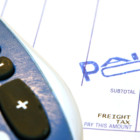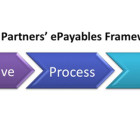We continue to build out our ePayables Study Hall series with this article focused on the various performance metrics by which a typical AP department is measured (The first three articles are found here – The Challenges, The Opportunities, and “The Approach”). You can also select the ePayables tag to see all of our articles on the topic. As a reminder we use the term ePayables to define all solutions that automate some part of the accounts payable (“AP”) process.
ePayables Study Hall – The Metrics
The Main Metric – Cost per Invoice
An accounts payable department seeking to improve its performance has several key areas upon which to focus: efficiency, effectiveness, and accuracy. An investment in accounts payable automation solutions referred to on these pages as ePayables can help the average AP group drive performance improvement across each of these areas.
Process Efficiency
This is the easy win area for enterprises operating in a fully or partially-manual environment today. The key metric to focus on is cost per invoice (which according to Ardent’s latest research ePayables 2016: The State of the AP Market is $19 on average) When you take (A) the total number of invoices processed and paid annually and divide it by (B) the entirety of your AP departmental costs which include expense items like payroll and other operating expenses, document management expenses, amortized investment expense, and allocated overhead, you get a cost per invoice.
Many AP professionals start to fret about calculating the total cost to run the AP department; don’t. If the operations are centralized, there’s no need to build the total department cost from the bottom up; that’s what budgets are for. Work with finance to pull this year’s and last year’s budgets. Assuming there have been no major business events (mergers, massive layoffs, etc.) the average figure for the past two years will be good enough to use. Just make sure that you understand what elements are included in the total cost.
If you are operating in a Shared Services environment that is combined with other functions, you will need to allocate certain costs across the different functions so that you can understand AP’s actual operating costs. Seek counsel from the Shared Services leadership and finance on an approach. If you’re unable to have that discussion or it is not fruitful follow these four quick steps – (1) Calculate AP’s total annual payroll (2) Divide AP’s total annual payroll by the entire Shared Services annual payroll and multiply that percentage times the entire Shared Services budget (not including payroll) to get AP’s share of the overall annual expenses (3) Add AP payroll from step one to AP’s allocated expenses calculated in step 2 to get the annual cost to run the AP department (4) Divide AP’s annual department expense by the total number of invoices to get a cost per invoice value.
If you are running your AP process in a fully decentralized manner, trying to calculate your cost per invoice will get unwieldy very quickly, Instead, you use a fallback metric – Processed Invoices per FTE (full-time equivalent) as a proxy for cost per invoice.
Taking a partial automation approach (i.e. automating one or two but not all of the phases in Ardent Partner’s ePayables Framework) will require you to allocate costs across the process – this is a more sophisticated analysis. If you’re working on this now, feel free to email me and I can walk you through this.
Truth be told, most organizations can stop at this point and make a successful case for an investment in ePayables solutions simply by understanding their cost per invoice, looking at the industry average cost to process an invoice using ePayables and making an assumption on timing and volume of invoices that will be converted to the ePayables platform. The benefits are that straightforward.
While you could stop here, I’ll continue on in the next ePayables Study Hall article to discuss other metrics because doing so will only make your business case more powerful. I’ll also seek to tie the entire series together in a few weeks.
In the meantime, if you’re free TODAY at 2 PM EST, register for this free webinar that I am giving on ePayables: The 2016-2017 Technology and Innovation Outlook, sponsored by Perfect Commerce (registration required).
RELATED ARTICLES
Webinar! Ardent Partners’ 2016-2017 ePayables Technology and Innovation Outlook!
ePayables Study Hall – The Approach
ePayables Study Hall: The Challenges
ePayables Study Hall: The Opportunities



